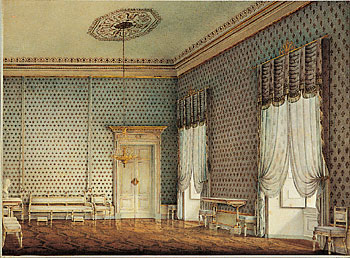Ducal Palace of Parma
44°48′15″N 10°19′37″E / 44.804129°N 10.327056°E




The Ducal Palace of Parma (Italian: Palazzo Ducale di Parma) was a neoclassical palace in Parma, Italy. It was located on the west side of the located at the Piazzale della Pace. Between its construction and 1866, it was the residence of the Dukes of Parma. Afterwards, it became the prefecture. During the Second World War, the palace was destroyed during air raids in 1944, and it was afterwards not reconstructed.
History
Initially, the ducal palace was only a set of houses that were temporarily used by the ducal court of Ottavio Farnese. In 1583, these houses were connected by a corridor with the 'Rocchetta Viscontea', a keep of which traces can been seen next to the Parma river. Over the next fifty years, additional buildings and courtyards were added to the corridor. This complex is now known as the Palazzo della Pilotta.
In the start of the 17th century, duke Ranuccio I Farnese (1569–1622) decided to reconstruct the set of houses in a new ducal palace. [1] Connected with the Palazzo della Pilotta, this became a large residential complex.[1] It became subject to various renovations.[1]
Duke Ferdinand I (1751–1802) considered the palace too modest.[1] And promoted by his chief minister Guillaume du Tillot, he commissioned the architect Ennemond Alexandre Petitot to design a new palace.[1][2][3] Petitot created a grandiose plan, which required the demolition of numerous buildings between the Palazzo della Pilotta and the current Garibaldi road.[1] These massive demolitions happened in 1766.[2] However, financial difficulties prevented the completion of the monumental plans.[1][2][3] Therefore, a large void remained and only the palace interiors were renovated.[1][2]
In 1833, duchess Marie Louise (1791–1847), Napoleon's second wife, engaged the architect Nicola Bettoli to reconstruct the façade in neoclassical style.[1][4][3] The works were carried out between 1833 and 1834.[1][4] The neoclassical style and the Ionic columns match the facade of the oppossing Palazzo di Riserva, which was connected to the Ducal palace by a corridor.[1][4] The renovation works also involved the interior of the palace, which has been captured in water colours by Giuseppe Naudin.[1][4]`
After the Unification of Italy, the palace became the seat of the regional prefecture.[1] Its name changed to Palazzo del Governo.[1] The connection between the Ducal palace and the Palazzo di Riserva was demolished at the start of the 20th century.[2]
The palace was severely hit and damaged by Allied air raids on 13 May 1944.[1][4][3] Immediately after the Second World War, it was demolished leaving a hole in the middle of the city centre.[4] There has been a proposal to reconstruct the palace in its original form.[1] However, the regional superintendency for antiquities rejected the project in 1963.[1] Various other attempts to rebuild the palace also did not have any effect.[1] The empty space at the Piazzale della Pace was occupied by parking lots for year.[1] But in 1998, the architect Mario Botta created a large lawn on the location of the palace.[1]
References
- ^ a b c d e f g h i j k l m n o p q r s t "Gli antichi platani di Piazzale della Pace" (PDF). www.pubblicigiardini.it (in Italian). Retrieved 25 April 2023.
- ^ a b c d e "La Piazza Ducale". www.fondazionecrp.it (in Italian). Retrieved 25 April 2023.
- ^ a b c d Fiaccadori, Gianfranco; Malinverni, Alessandro; Mambriani, Carlo (2011). Parma: Immagini della città dal Ducato all'Unità d'Italia (PDF) (in Italian). Parma: Fondazione Cariparma/ Grafiche Step. p. 109.
- ^ a b c d e f "Giacomo Giacopelli, "Il Palazzo Ducale di Parma"". www.fondazionecrp.it (in Italian). Retrieved 25 April 2023.
Further reading
- Bocchi, Maurizio; Vitale, Alessandro (2006). Gli antichi platani di Piazzale della Pace (PDF) (in Italian). Parma: Planorbis/ Community of Parma. p. 17.
Gallery: A tour of the palace interiors in the time of Marie-Louise (1832) through the watercolours by Giuseppe Naudin
-
The throne room
-
Reception room
-
Drawing room
-
Study of Marie-Louise's children
-
Bedroom of Adam von Neipperg
-
Marie-Louise's bedroom






